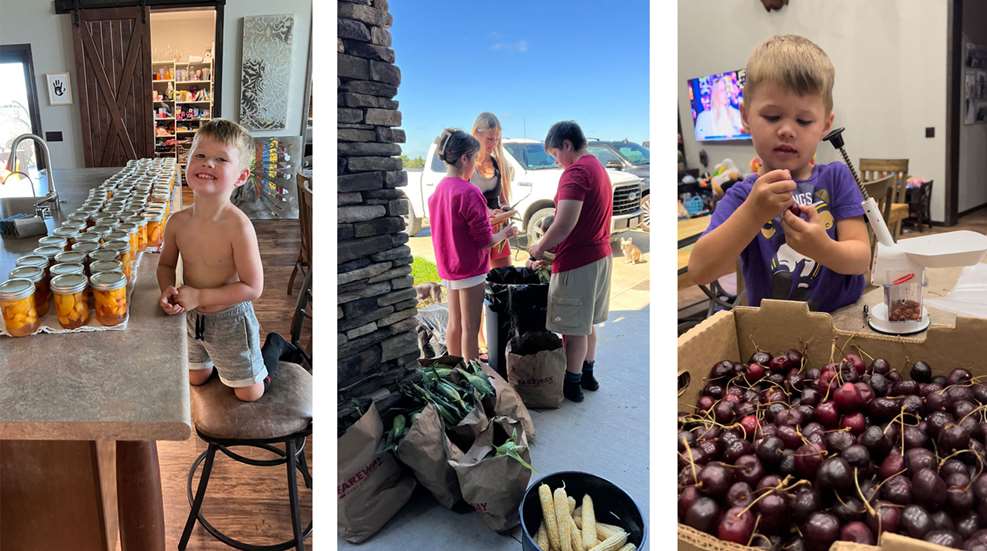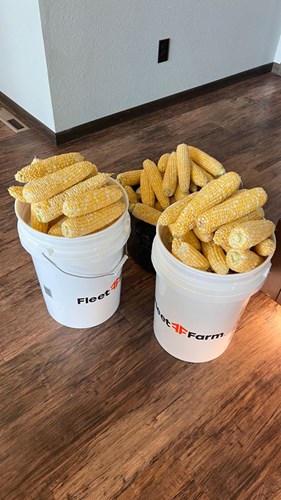
As a hunter I get great gratification knowing we could easily sustain and live well off the land if ever required. Of course, the hunting part is easy; it’s what I’ve done my entire life. However, if you want to be a great hunter/gatherer, having a garden, and knowing how to can, preserve and freeze food is also important.
This year I made it a goal to fill our freezers and shelves with as much healthy organic and local food as possible. These are things my parents and grandparents always did when I was a kid—with my help, of course. I can still remember making sauerkraut in the big crocks at my great grandma and grandpa’s house. Each season my mom canned peaches and many other types of food. So I decided it was finally time to dive in and learn to do it all own my own, starting with acquiring the appropriate equipment.

Instead of choosing exactly what my parents or grandparents canned, I decided on things that we love as a family and will put to good use. My list included sweet corn, peaches and cherries, to start. To kick things off I ordered four crates of peaches and 20 lbs. of cherries that came fresh off a farm in Georgia. Immediately Jax and I started going to work on the cherries. I bought a pit remover at Fleet Farm, (when I went in to buy supplies I wasn’t even aware this was a think but decided to give it a try). This was definitely worth the money as we were able to get through the cherries pretty quickly. I put Jax in charge of this project and he was a big help—see him in action in this video—although a 3-year-old has a lot of questions (and he spent the majority of time eating cherries). Eventually we finished the job. Our plan with the cherries is to make fruit smoothies all winter, as our kids love these and they’re so much more flavorful than buying bagged frozen fruit.

Next up were the peaches. We let them sit for about three days until they reached the perfect level of ripe, and then began the process. I actually decided to do this on my birthday to ensure I had plenty of help! I had everything ready and prepared the night before, and Ben and I started in the morning. We worked all day almost non-stop and completed well over 100 pints of peaches.
Very quickly I realized that canning is a lot more work than freezing due to ensuring everything is sterilized, but having two of us working made the process run smoothly. I filled a big pitcher with the sugar water solution, which was 2 cups of water to ¾ cup of sugar. My job was to take the jars out of the dishwasher, boil the jars and lids, fill the peaches into each jar, top off with the sugar water, and close. Once I had enough I would drop them into the boiling water for 20 minutes. Once that was complete I set them on the counter, and anything that didn’t seal right away I flipped upside down. Ben was in charge of peeling and cutting. This process worked out perfectly. We used every inch of counter space and had every burner going on our stove.
A couple of helpful items I purchased were a magnetic stick (to pull the lids out of boiling water), and a jar clamp to help lift the jars in and out of the boiling water, as well as the oversized pots. Of course, these are just extras, but for the price I believe they were absolutely worth it.

Next up was sweet corn, and after going to a local farmers market, where I learned the unfortunate news that grasshoppers had destroyed most of the sweet corn in our area. So on my way to a meeting in Minneapolis I stopped in a small town and purchased 17 dozen cobs of sweet corn with plans to begin freezing it the next day. For this I gathered up all the kids to help me shuck corn. Once everything was cleaned I placed it in the kitchen and again used my big pots to boil water.
Once the water was boiling, I added the corn until it came to a boil again. Then I removed it from the hot water and placed it in the sink full of cold water. Once cooled, I placed it on a rack to dry and fired up the electric knife. Once I had piles of corn, I put about 2 cups per quart sized pre-made FoodSaver bag and ran it through the sealer, removing any air and completing the process. We ended up with a little over 70 bags of corn and again all this is wonderful to have on hand, but it was great having our kids involved and teaching them one more aspect of where their food comes from.

Our garden is still doing well but we have been eating everything that comes from it so for now there are no extras to can or freeze. I’m hoping to increase the size of our garden next year and also begin pickling fish. As a kid we pickled all our northern pike and it was a great snack to grab out of the fridge. The best part is the vinegar dissolves all the bones so kids can learn to clean fish and still have them edible during the early learning stages. We also plan to can our venison this fall (if I can find the time!) but it never hurts to make a plan!















































